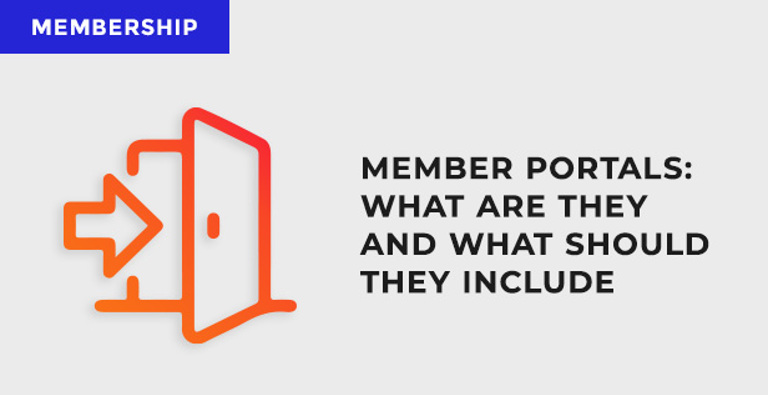With the growing demand for online services, member expectations are greater now more than ever which is why it’s important that your online offering takes their needs into consideration. A Member Portal could be your gateway into providing more value to your members and enriching their membership experience; as well as attracting prospective members to sign up.
What is a Member Portal?
A Member Portal is an online hub that should be used for all a member’s needs.
In theory, once someone is a member, they will have no real need to visit the public facing marketing website. The public facing site should primarily be used as a resource for non-members and to encourage sign ups. Other purposes may vary depending on the type of membership organisation.
Everything a member needs should be in the Member Portal. It should be a one-stop shop where they go to access everything they need from your membership organisation; this again will vary depending on what type of membership organisation you are and what your membership offering includes.
A Member Portal should be accessed via a login using email address/username and password that is unique to each member. If utilised and built well, it will be a dynamic area of content that changes based on who is logged in, what membership package they have and what their permissions are to view certain content.
It’s important that your Member Portal is easy to find on your website and that there are clear signposts for Members to log in. Having a Login button on the top right corner of every page on your website is a common user experience feature that users will be familiar with. However, please consider including it on other relevant landing pages on your website to make it as clear as possible.
Basic functions of a Member Portal
There are some basic functions of a Member Portal that all Members will expect when logging in. They will require a certain level of self-service features that are now commonplace amongst membership organisations such as:
- Update their contact information – this should be tied to your Member Database or CRM to be used as a single source of truth to save admin time
- Manage their membership e.g. see which package they have and renew/cancel their membership
- Access and manage their membership payments – however if members are paying by Direct Debits then this becomes a much easier process
- Control how they’re contacted and manage their communication preferences
- Sign up to newsletter mailing lists which can be tied to your email marketing platform such as Mailchimp
- Be able to get in touch and access help and support easily
Other things to consider for a Member Portal
There are plenty of other options that can be available in a Member Portal and is driven by what your membership offering is, your goals and user needs. Below we’ve highlighted a few points to consider offering your members via a Portal but by no means is this an exhaustive list:
- Personalised content based on their areas of interest and expertise
- See News and Events relevant to them
- Access discounted Events, products and promotions based on membership level
- Exclusive resources and restricted content based on membership level
- Access online webinars and recordings from Events they have signed up to
- Member Directories and Forums so that members can collaborate and network
- Notification centre which keeps a log of all member communications they receive via email
How should a Member Portal look?
A Member Portal needs visual continuity with your website. This is important from both a branding and user experience point of view. Your members need to know they’re being sent to somewhere that is secure, and the branding is familiar. It should follow your brand guidelines, colours and fonts to maintain professional consistency from your website. However, its key to let them know they are now in the Member Portal area so clear headings and navigation changes will be key to its success.
Your navigation and hierarchy of content will be driven by what you include in the Portal and you should consult with a user experience designer to make sure it meets your member’s needs. Navigation should be simple and key areas should be grouped into manageable chunks so as not to overload users with lots of options. Clear signposts to information and visual elements can help aid navigation and make your Portal a pleasant experience to use.
Summary
Your Member Portal should be a single place for all a member needs to do. Whether this be in its most basic sense; to manage their contact details and membership, or if you want it to become more of a comprehensive online hub where members can go to access their member benefits, resources, discounts and collaborate with other members… you need to identify exactly who your members are and what needs they’re likely to have from you as a membership organisation.
Start by setting out your key goals as an organisation to identify any initial areas of improvement. Perhaps then ask your members what it is they’d like and how their membership experience could be enriched online. They may have some useful insights which could help shape what you need your Portal to do.





